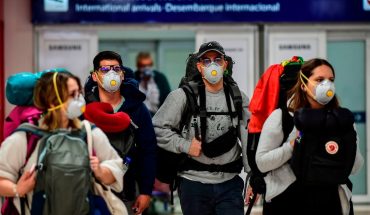Although the disease became known in the early 1900s, only in 2020 did the World Health Organization establish April 14 as World Chagas Disease (HCD) Day, with the aim of raising awareness about this disease and advancing equitable and comprehensive health services for all those affected.
This concern is based on the fact that despite the high numbers of infected globally – 6 million people, with an annual incidence of 30,000 cases in America and 9,000 newborns infected during pregnancy – this disease is considered by the WHO as a “neglected tropical disease”.
Chile is no exception either. This disease, caused by the protozoan parasite Trypanosoma cruzi, is still present in our country, despite the fact that Chile was declared free of home vector transmission in 1999.
According to the academic of the Faculty of Sciences of the University of Chile, Carezza Botto, the usual confirmation of cases at the national level “may be due to several factors. First, this disease can take many years to appear, even decades. Therefore, new cases may correspond to people who were infected very young, but only recently presented symptoms of the disease or were diagnosed by donating blood (i.e., a finding).”
“Second, another form of transmission is vertical, that is, from mother to child. Therefore, some of the new cases may be due to women infected with the parasite who have had children with the infection. Finally, even when the species of kissing bug historically associated with the homes (Triatoma infestans) is controlled, there are three other species of wild kissing bugs of the genus Mepraia that are also infected with the parasite, they approach the homes and peridomicilios, where they feed on humans and animals associated with humans, “he details.
How climate change affects
Chagas disease is transmitted to humans through the infected feces of hematophagous insects known as “kissing bugs”, which are present in northern and central Chile, mainly in areas with a Mediterranean climate, where the greatest risk of contagion occurs in spring and summer due to the greater activity of these insects.
Studies led by Dr. Botto state that “climate change has the potential to modify the distribution of kissing bugs, since, like all insects, they are ectothermic organisms. Therefore, their development, reproduction and dispersal capacity depend largely on the ambient temperature.”
In this sense, he warns that “if the temperature increases (the maximum and minimum temperatures) its development time can be accelerated and it could move to new areas where they were not found before”, specifically to the north of Biobío.
Early diagnosis and comprehensive treatment
The academic of the Cellular and Molecular Biology Program of the University of Chile, Inés Zulantay, has been working with patients suffering from this disease for more than 40 years and researching its treatment. That is why he emphasizes that, within the framework of this commemoration, it is important to make a call “to join efforts, ideas, knowledge and experience, together with collaborations and multisectoral alliances for its control and elimination, which today has a global character”.
The professor of the Faculty of Medicine of the University of Chile points out that a timely diagnosis is “fundamental”, especially in children of mothers with this disease, because “the earlier the diagnosis and confirmation of the infection, the treatment should be administered promptly and, in this way, it will be possible to confirm the cure in a high percentage of cases, with the parasitological and serological assessment tools available in Chile”.
There are two universally accepted drugs to treat this disease: Nifurtimox (Lampit, Bayer) and Benznidazole (Abarax, Elea Laboratory), both available in the country. Although these drugs can present side effects, the benefits are greater, since “in the acute phase, either acquired through the Triatoma infestans vector (kissing bug), transplacentally or congenitally, by transfusions, orally (contamination of juices and food with droppings of infected kissing bugs), by transplants (donor or host with ECh), or by laboratory accident, An average of 70-75% have a cure.”
“An exception is congenital cases that, if treated within a year of infection, will cure a percentage close to 100%. In the chronic phase of parasitosis, treatment is aimed at reducing congenital infection by treating womenIt is with Chagas disease of childbearing age, to prevent the development of chronic Chagas’ heart disease (the most severe phase of infection) and to reduce the prevalence of infection and spread (Apt, Zulantay and Salas. Rev Med Chile)”, explains the academic.
Despite all this background and the fact that in Chile there are around 120,000 patients with Chagas disease, Professor Zulantay assures that “to date less than 1% of them have been treated etiologically, as happens in most endemic countries”.
Faced with this problem, he adds, “our research group has contributed to the treatment of Chagas disease for three decades in various aspects (normative, diagnostic, basic, clinical trials and new efficacy evaluation criteria, among others), but the efforts, quantitatively, are not enough”.
“Undoubtedly, our country is indebted to all people who have not yet been treated and a significantly greater debt to those people who no longer have the possibility of being treated, because they have evolved to the determined stage of the disease (cardiac and/or digestive involvement) or exceeded the age necessary to be included within the priority groups,” sentence.
World Chagas Disease Day: less than 1% of the nearly 120,000 infected in Chile are undergoing treatment
April 14, 2023 |





